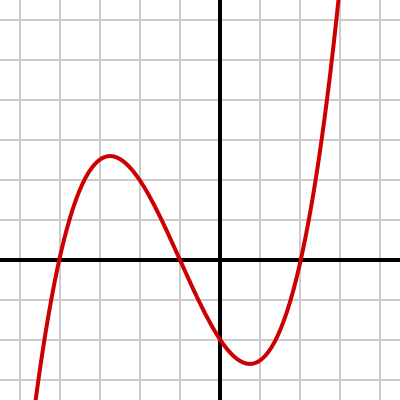You have /5 articles left.
Sign up for a free account or log in.

Wikipedia
Michigan State University has revised its general-education math requirement so that algebra is no longer required of all students. The revision reflects an increasing view on college campuses that there is no one-size-fits-all math curriculum -- and that math is often best studied in connection with everyday life.
Under the old requirement, students had to select and complete four math courses -- including algebra -- from a designated list. They could also waive the requirement by using transfer credits or obtaining a certain score on a proctored exam.
Now, students can fulfill the requirement by taking two quantitative literacy courses that place math in a real-world context. They also still have the option of taking algebra along with another math course of their choice -- whether a quantitative-literacy course or a more traditional course like trigonometry.
Algebra can present math in a formulaic way. But professors and administrators say the revised general-education math requirement will help students see math's applications to the real world.
“We’re trying to present mathematics in a way that makes it more accessible and understandable,” said Vince Melfi, associate professor of statistics and probability. “Much of mathematics was developed in order to understand the real world. When students are encountering questions in their personal or professional lives, they should be thinking about mathematics and quantitative reasoning as tools they might use.”
Two quantitative-literacy courses -- Math 101 and Math 102 -- will be offered this fall, Melfi said. An estimated 1,000 students will enroll in these courses each year, he said.
Students in these courses will study how probability applies to health and risk, Melfi said. For instance, students could be informed that a hypothetical person’s test came back positive for breast cancer. Based on that information, they would be asked to determine the likelihood that the person had the disease.
After arriving at answers, students would be encouraged to discuss the value of screening for diseases such as breast cancer or prostate cancer -- a topic that has fostered debate among medical professionals, Melfi said. “An important part of these courses is to go beyond just manipulating symbols on a page and coming up with the right answer, and to reflect on what those answers mean in a specific context,” he said.
The quantitative-literacy courses will ideally prepare students to solve pressing problems facing humanity, said Keith Promislow, chair of the math department. “The challenges in front of us as a society are tremendous,” he said. “They’re going to make the Industrial Revolution look like a walk in the park. And education is at the forefront.”
On a smaller level, these courses are also aimed at helping students perform key tasks in their everyday lives, said Doug Estry, associate provost of undergraduate education. “If they were to pick up the science section of The New York Times, could they sufficiently understand articles that talked about issues that involve quantitative evaluation, like the effectiveness of drugs? Those are the kinds of things that affect every citizen.”
Still, it’s important to remember that the quantitative-literacy courses will mainly have an impact on students in non-STEM majors, Estry said. Students in STEM fields will still have to fulfill their majors' math requirements, which will likely entail taking algebra followed by trigonometry and calculus, he said.
“Honestly, engineering students or physics students are going to do that,” Estry said. “Those are the courses they really need for their majors.”
Thomas Barr, special projects officer for the American Mathematical Society, said he approves of the way Michigan State revised its general-education math requirement. “In this day and time, it’s appropriate to look at alternatives to the notion of the one-size-fits-all college algebra,” he said. “All too often, mathematics may be taught in a context-less way.”
“Sometimes when thinking about problems, you do need to strip away the context and look at the inner relationships,” Barr added. “But for students in introductory courses, having too much emphasis on that can be detrimental.”
Barr said he only has one small concern about the revised requirement. It could be problematic if a student who completed a quantitative-literacy course subsequently decided to take more advanced math courses, he said.
“There is some hazard of the student having gotten an inaccurate picture of what advanced mathematics might be like,” Barr said. “But that’s not a deep concern, because I believe the sort of student who wants to go on into advanced mathematics will recognize it early on. And if they really have an inclination for that, they’ll be able to deal with that transition.”
Looking beyond Michigan State State’s campus in East Lansing, conversations about general-education math requirements are ultimately playing out across the state. Earlier this month, Wayne State University in Detroit dropped its general-education math requirement altogether. But in a move similar to Michigan State, Wayne State will introduce new quantitative-experience courses to ensure that students are still graduating with quantitative-reasoning skills.
In 2014, the 15 state universities and community colleges in Michigan also engaged in discussions of general-education math requirements when signing the Michigan Transfer Agreement. The agreement allows a student to transfer from a participating community college to a participating four-year institution after completing 30 credits in core areas, including one math credit. In particular, a student must have completed a math credit in one of three pathways: algebra, statistics or quantitative reasoning.
Michigan State’s new general-education math requirement better aligns with the demands of the Michigan Transfer Agreement, said Bob Murphy, director of university relations and policy for the Michigan Association of State Universities. “It’s helpful in general, but especially for students who transfer,” he said. “Ideally, it will lead to more successful graduation outcomes.”




